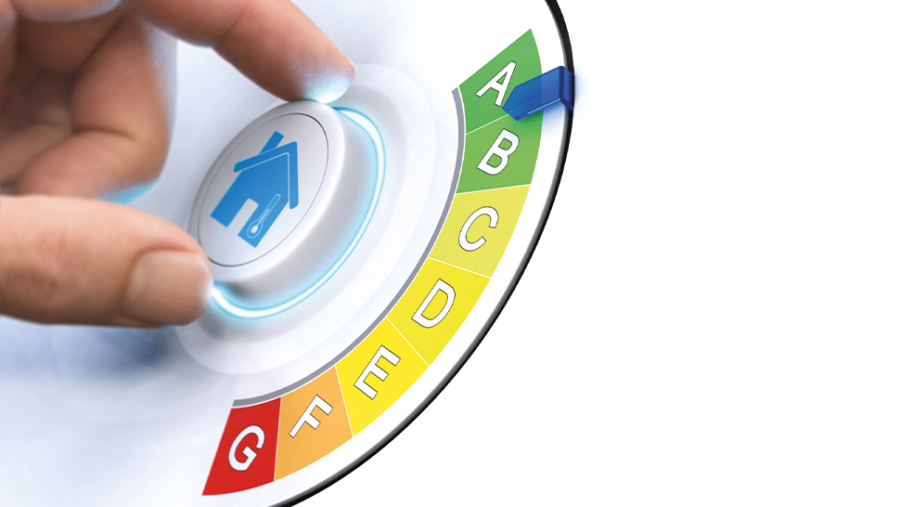

The government’s energy white paper presented in 2020 set out the proposed changes to the EPC regime as part of the government’s drive towards meeting its 2050 net zero emissions standard. The changes proposed include raising the minimum EPC standards for commercial properties to ‘C’ by April 2027 as an interim milestone, and to ‘B’ by April 2030 with phased implementation and compliance ‘windows’. A reminder of the current position and exemptions can be found here.
Whilst draft legislation is awaited, it is more a question of when rather than if it will be brought forward.
Will the EPC regime really tighten?
It would be tempting to think that a government battling to drive down inflation, managing a cost-of-living crisis and distracted by a war in Europe would have neither the time nor inclination to bring forward further legislation to reduce carbon emissions and support its drive to net zero by 2050. However, the need to become more energy efficient has never been greater, underscored by the recent energy crisis. The Environmental Audit Committee recently called for a national mobilisation, or ‘war effort’, on energy efficiency to reduce household energy bills, cut climate-changing emissions and reduce reliance on fossil fuel imports.
As the government drives its net zero agenda forward, stricter MEES regulations are an essential component in becoming more energy efficient, achieving environmental targets, leveraging technological advancements and reaping the economic benefits of energy efficiency.
Nearly four fifths of current building stock is expected to still be in use by 2050. This stock will require substantial ‘sustainable’ refurbishment and retrofitting and the vast majority – more than three quarters – would not meet the 2030 target of a ‘B’ rating. Whilst this represents a huge challenge, it is an increasingly urgent one both in environmental and economic terms. On average, commercial buildings waste as much as 30% of the energy they consume. By raising the bar and pushing for higher energy performance standards, the MEES regime ensures that commercial buildings will play their part in the global transition to a more sustainable and low-carbon future.
What does the future hold for EPCs?
As we move towards a more sustainable future, the role of EPCs, which have become an essential tool for assessing and improving energy efficiency, is set to evolve. The RICS is lobbying government for the EPC scheme to be improved and expanded to make it fit for the different purposes that it serves. It is perfectly possible, in fact more than likely, that the purpose and scope of EPCs will expand in the future – the below are some ways in which the role EPCs play in the drive to net zero may change:
Integration of renewable energy sources: The future of commercial EPCs will likely witness a greater emphasis on renewable energy integration. Buildings equipped with solar panels, wind turbines, or other renewable energy systems will have an advantage in achieving higher EPC ratings. As the costs of these technologies decrease and their efficiency improves, more commercial properties will adopt renewable energy sources to enhance their energy performance.
Smart building technologies: The rise of the Internet of Things (IoT) and smart building technologies will revolutionise EPC assessments. Smart sensors, energy management systems, and real-time data analytics will enable more accurate monitoring and reporting of energy consumption. Commercial buildings will have the ability to optimize their energy usage, detect faults, and make informed decisions based on the data collected. These advancements will contribute to better EPC ratings and more sustainable operations.
Lifecycle assessments and net-zero targets: In the future, commercial EPCs may evolve to include lifecycle assessments, considering the environmental impact of a building throughout its entire lifespan. This broader perspective will evaluate not only energy efficiency but also factors like materials used, construction methods, and the potential for deconstruction and recycling. EPCs will play a crucial role in helping businesses achieve ambitious net-zero targets by providing guidance on reducing embodied carbon and operational emissions.
Continuous monitoring and certification: Traditionally, EPCs are conducted periodically, but future trends may see a shift towards continuous monitoring and certification. Real-time data collection and analysis will allow for ongoing assessments of a building’s energy performance. This dynamic approach will enable businesses to identify and address energy inefficiencies promptly, optimise energy usage, and maintain high EPC ratings over time.
Embracing digital efficiency
Increasingly landlords are moving away from the ‘design for compliance’ approach to building construction and retrofitting, towards a performance-based rating system of ‘design for performance’ system, utilising smart building technologies and digitalising de-carbonisation efforts. The recent energy crisis with record utility prices brought into clear view the importance of energy efficiency. Rather than providing a snapshot in time, it is possible that EPCs will evolve to record energy use through a continuous monitoring and certification process. By adopting a design for performance approach and embracing digital efficiency, landlords can not only get ahead of the regulatory changes but will also benefit from a set of data which can drive and improve energy efficiency and long-term portfolio management.










